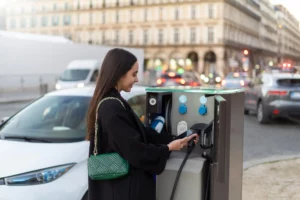
Home / EV Charging News / How Much Charge Does an Electric Car Lose When Not in Use?
Electric vehicles (EVs) are becoming a staple on our roads, offering a cleaner, more efficient alternative to traditional gasoline-powered cars. However, like all battery-powered devices, EVs can experience energy loss even when not in use. Understanding how much energy your EV loses when parked can help you better manage your vehicle’s performance and battery health. This article explores the factors contributing to energy loss and provides tips on how to minimize it.
Electric cars, like any device with a rechargeable battery, can lose some of their stored energy when they are not being driven. This phenomenon, known as parasitic drain or phantom drain, occurs due to several factors. Parasitic drain is the small but continuous consumption of power by the car’s electronic systems, even when the vehicle is turned off. Modern EVs are equipped with various systems that remain active to some extent, including battery management systems, security systems, and other electronic components. These systems ensure the car’s functionality and security but can contribute to energy loss over time.
Several factors influence the rate at which an EV loses energy while parked.
The rate of energy loss varies depending on the make and model of the EV, as well as the factors mentioned above. On average, an EV might lose between 1% to 3% of its battery capacity per month when not in use. For example, if your EV has a 75 kWh battery, you might expect to lose around 0.75 kWh to 2.25 kWh per month. This rate can be higher or lower depending on specific conditions and the vehicle’s design.
There are several strategies to minimize energy loss in your EV when it is not being used:
Understanding the factors that contribute to energy loss in an electric vehicle when it is not in use can help you better manage your car’s battery health and overall performance. While a certain amount of energy loss is inevitable, implementing strategies to minimize this drain can extend the life of your battery and ensure your EV is ready to go when you need it. By taking steps to protect your EV from extreme temperatures, managing your battery’s state of charge, and adjusting vehicle settings, you can reduce the impact of energy loss and enjoy the benefits of driving a sustainable and efficient vehicle.
